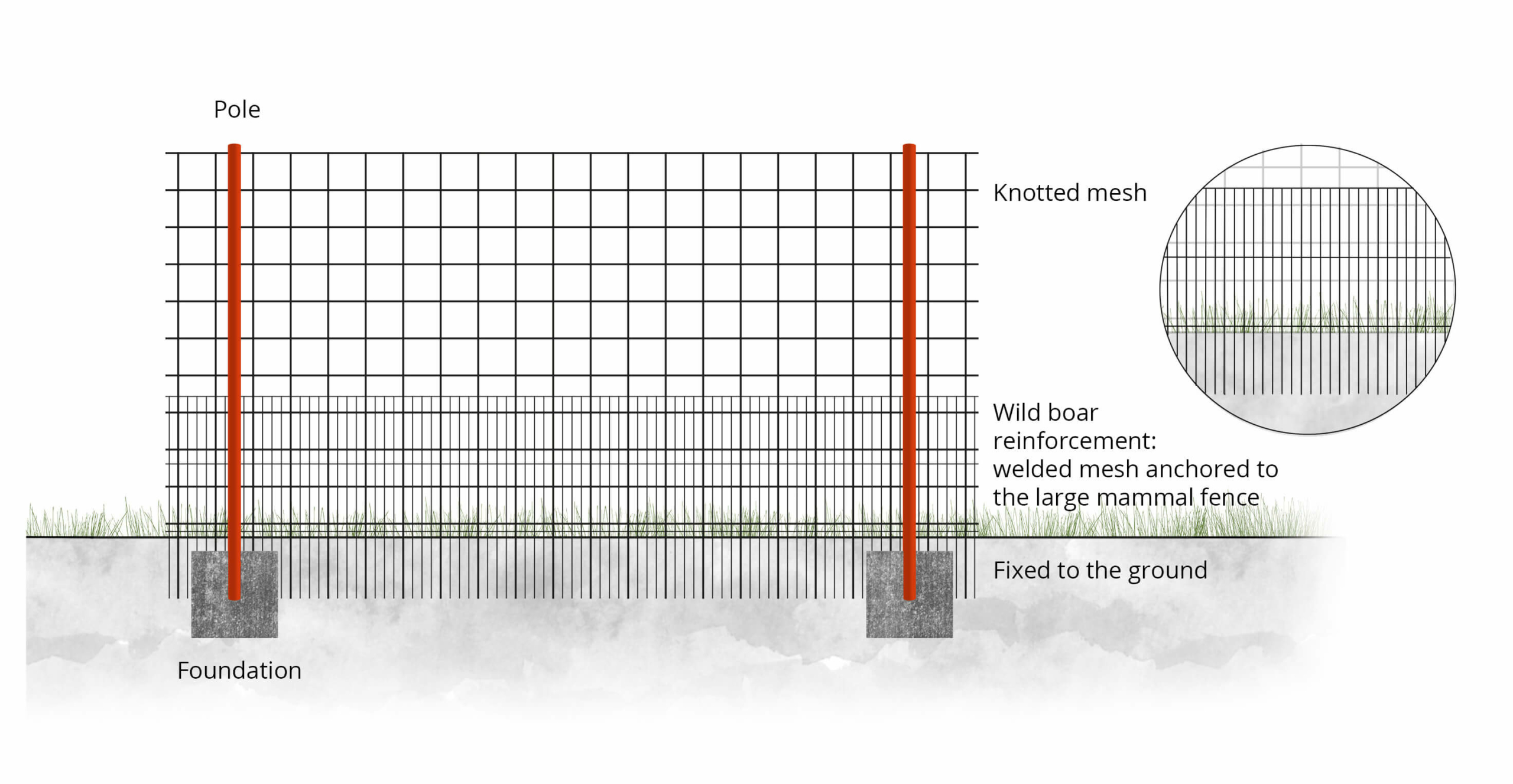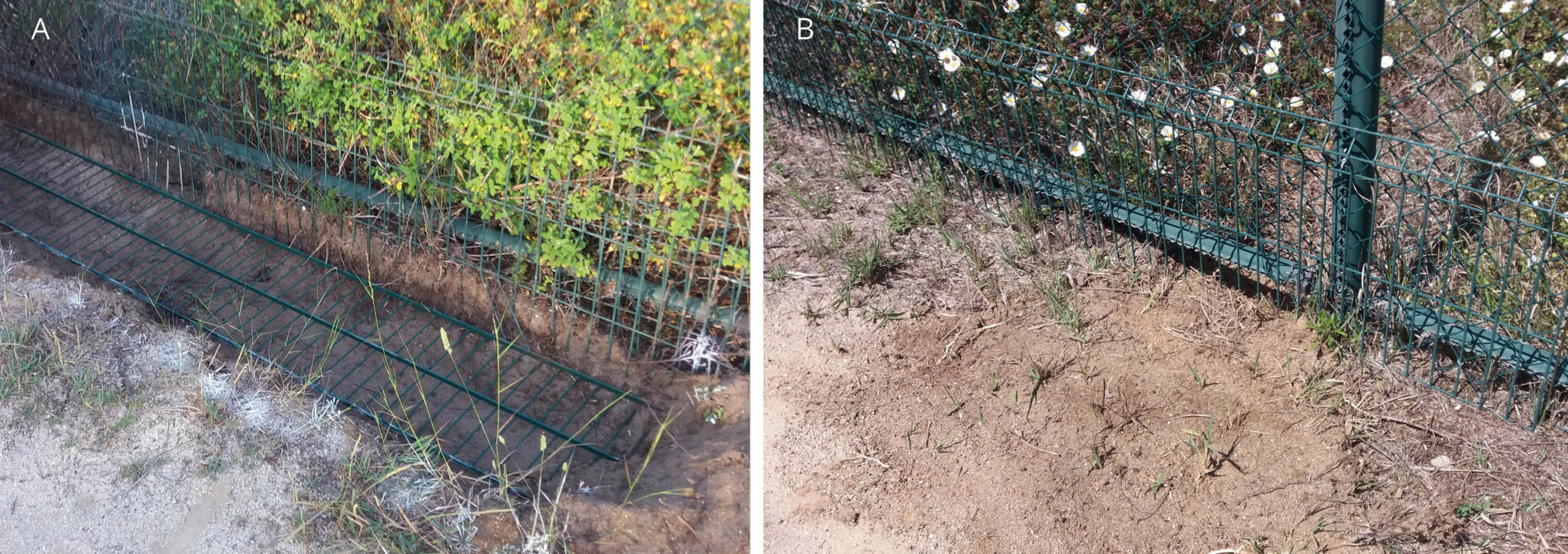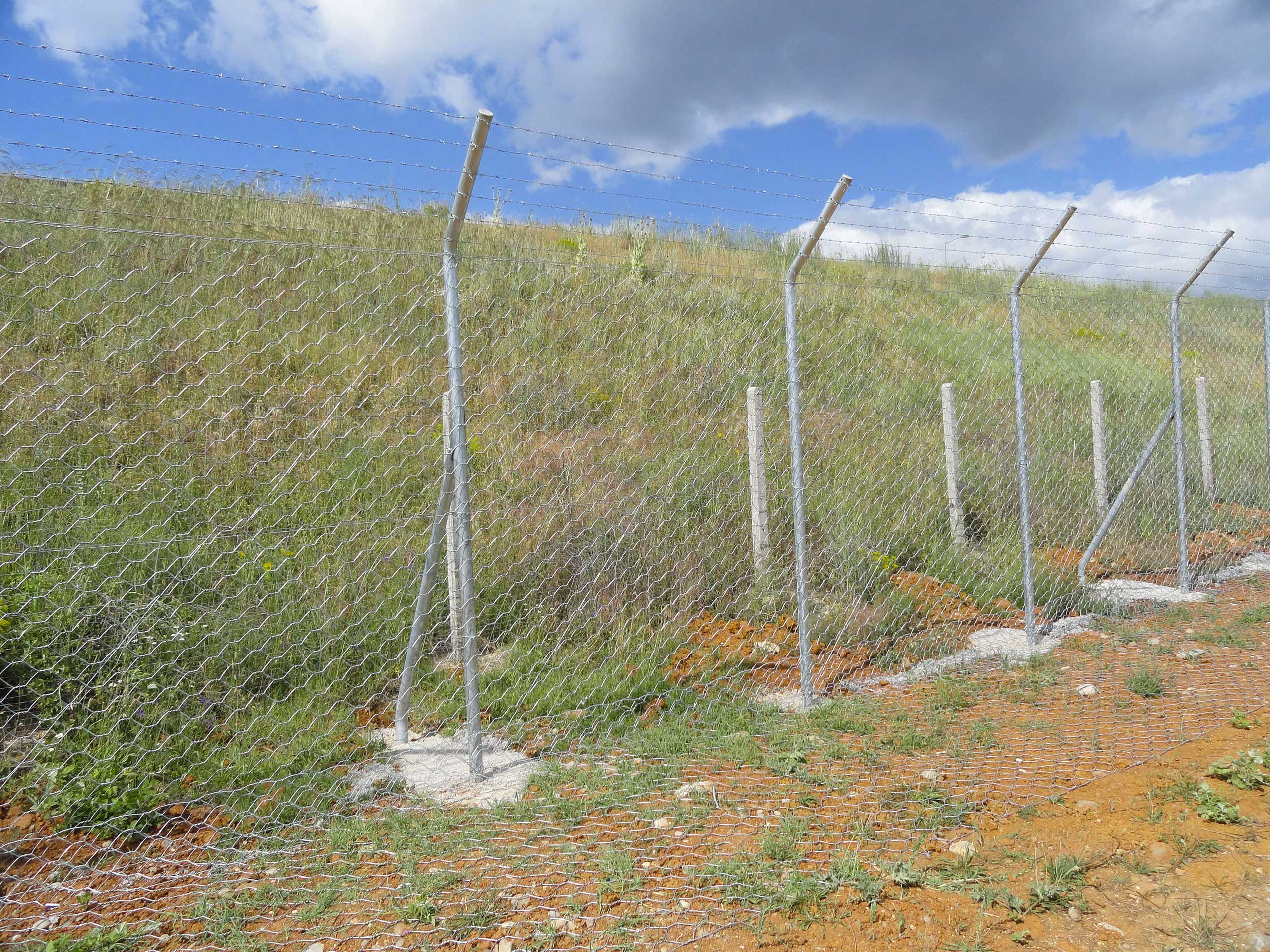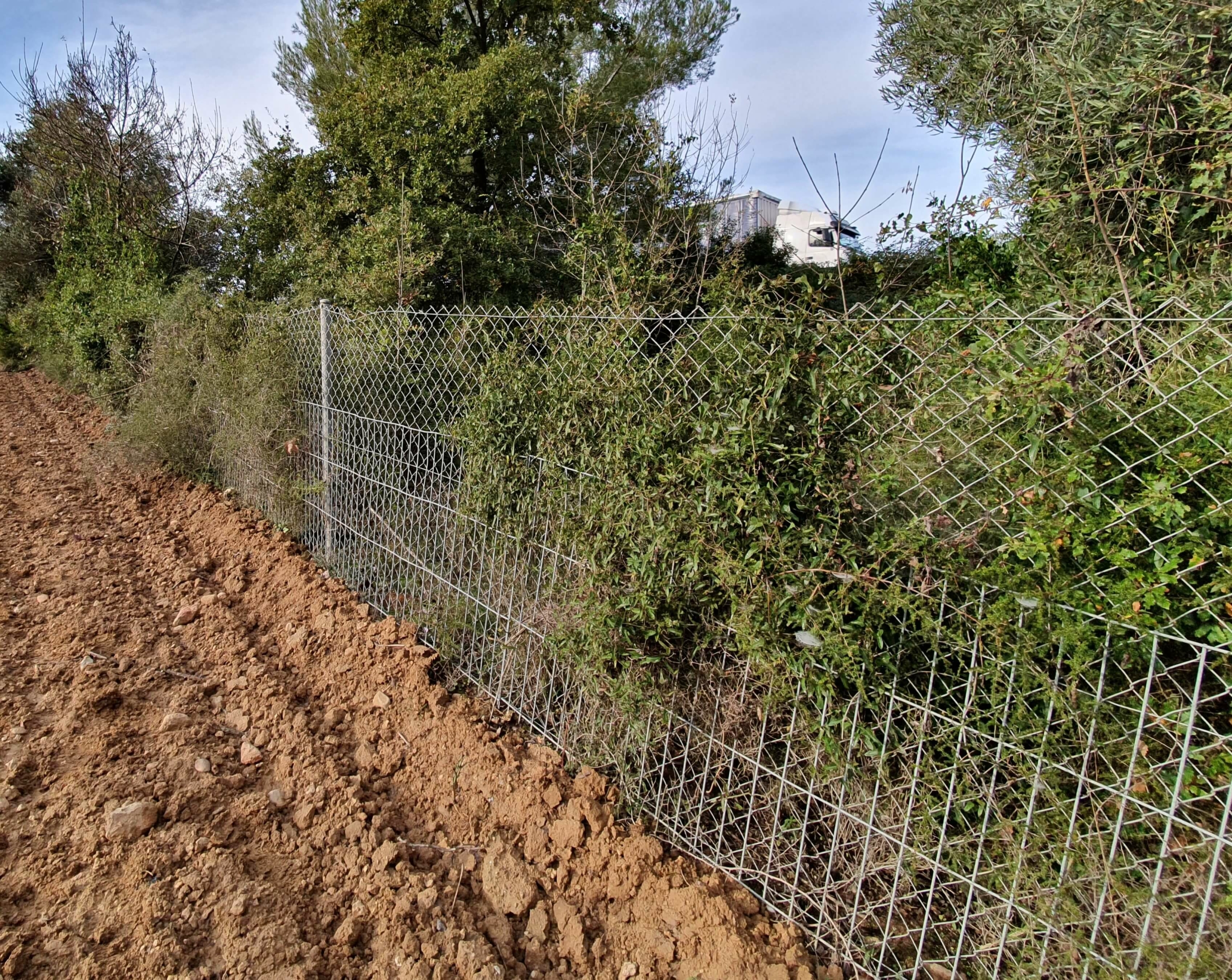Where animals, particularly brown bear, wild boar, badger, foxes or rabbits, are accessing infrastructure under existing fences, reinforcements can be installed to make these more robust (Figure 5.2.16). Reinforcements could also be included in the design of new fencing in sections where conflicts with burrowing species are expected.
Several materials can be used to deter burrowers. Panels of metal or recyclable durable polymers could be used such as in the case of small fauna (Figure 5.2.13). One of the most widespread practices in Europe is the use of welded wire mesh panels that are attached to the exterior part of a standard fence for large mammals and buried into the ground.
Dimensions and design of the welded reinforcement mesh are according to target species (Table 5.1). This will most often require:
- Burying the reinforcement fence 20 to 50 cm into the ground.
- In the case of any persistent burrowing by species such as fox or wild boar burying the reinforcement fence in the form of an L towards the outside, to a depth of 20 cm, with a 20 cm horizontal fold outwards has been proved to be effective (Figure 5.2.17).
- Where wild boar is the target species, an effective solution is to install additional welded mesh 30×5 cm buried 20 to 50 cm at the bottom of the fence. Standard panels that can be nailed to the soil are available. Long pins driven into the ground to hold the bottom of the fence to the ground could be an alternative method to fix the mesh. Despite not being particularly effective, this could provide a solution where the ground is hard.
- Where brown bear is the target species, an additional wire mesh can be installed at the bottom and buried in a L-shape design: 20 cm vertical and 120 cm horizontal and covered by soil (Figure 5.2.18).


The standard large mammal fence could be complemented with modular panels to prevent climbing and digging, or with opaque guiding fences for amphibians and other small fauna (Figure 5.2.13).
Electrified wires and reinforced wire mesh could also be used in particularly conflictive fenced areas. Technical prescriptions vary according to target species and national regulations must be considered before applying such solutions.

